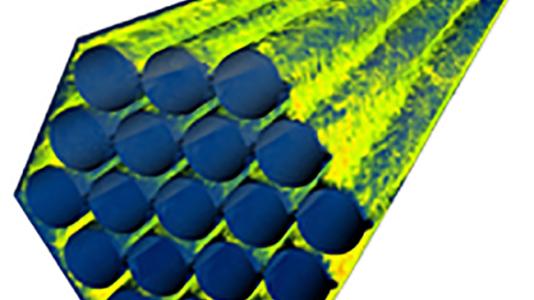
The objective was to enable developers and users of Nek5000 to exchange information, address technical issues and share experiences in areas of common interest.
Nek5000 is a scalable fluid-mechanics and heat-transfer simulation code developed in the Mathematics and Computer Science Division at Argonne under the U.S. Department of Energy’s (DOE) Advanced Scientific Computing Research program, with additional application support from the DOE Nuclear Energy Advanced Modeling and Simulation Program.
An open source code, Nek5000 enjoys an active users group with over 60 registered users. Participants at the workshop gave short presentations of their applications of Nek5000, which included nuclear reactor modeling and simulation, film cooling for gas turbines, sub-mesoscale oceanography, combustion in microscale channels, astrophysics and vascular flow modeling.
“I was impressed by the depth and breadth of what these researchers are doing,” said Paul Fischer, senior computational scientist at Argonne and developer of the Nek5000 code.
Other topics discussed during the meeting included electromagnetics modeling with the NekCEM code and performance of NekLBM, a new code that couples lattice Boltzmann methods with the spectral element discretization that is at the heart of Nek5000.
Nek5000 is an early science application on Blue Gene/Q at Argonne and, through funding from the Innovative and Novel Computational Impact on Theory and Experiment Program (INCITE) program, has been used for large-scale numerical simulations on DOE’s most powerful leadership computing facilities.
“The presentations at the meeting clearly showed that these codes scale to 260,000 processors and are ready for next-generation platforms targeting a million processors and beyond,” said Fischer.
In addition to the technical presentations, the workshop included hands-on sessions in the use of Nek5000 and associated codes for mesh generation and parallel data analysis and visualization.
The meeting also gave users an opportunity to discuss ideas for future developments in the code suite and to build rapport within the user community. The users agreed that a second Nek5000 meeting would be held in Europe in 2012.